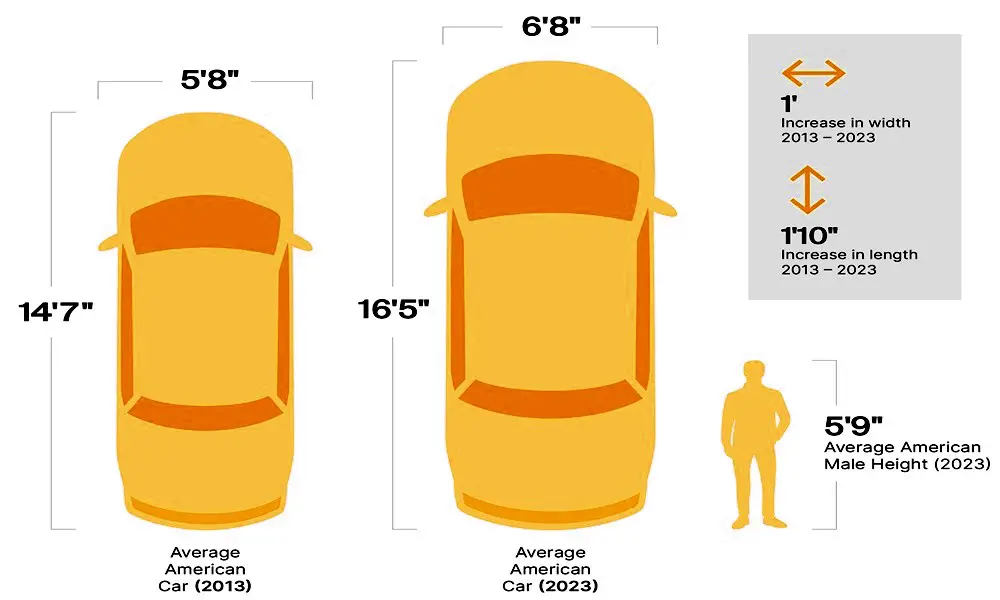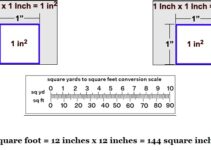Car Size in Feet

When it comes to cars, understanding their size in feet is essential—especially when it comes to parking in garages, driveways, or tight urban spaces. From vehicle length, width, and height to standard parking space dimensions, having this knowledge can save time, prevent accidents, and make daily driving far more convenient.
In this updated article, we’ll explore current car size trends, standard U.S. parking space dimensions, and practical tips for maneuvering your vehicle in a variety of environments.
Understanding Car Dimensions
Car dimensions affect everything from maneuverability and aerodynamics to garage storage and parking convenience. The three primary measurements are:
- Length – from the front to the rear bumper
- Width – from side mirror to side mirror
- Height – from the ground to the highest point (usually the roof or antenna)
Average Car Size in 2025
Due to the rise in popularity of SUVs and electric vehicles (EVs), average car dimensions have shifted slightly in recent years.
| Car Type | Average Length | Average Width | Average Height |
|---|---|---|---|
| Compact Cars | 13.5–14.8 ft | 5.7–6.0 ft | 4.7–5.0 ft |
| Midsize Sedans | 15.2–16.4 ft | 6.0–6.5 ft | 4.9–5.2 ft |
| Full-Size Sedans | 16.4–17.7 ft | 6.2–6.7 ft | 4.9–5.3 ft |
| SUVs/Crossovers | 15.5–17.8 ft | 6.2–6.9 ft | 5.5–6.0 ft |
| Pickup Trucks | 17.5–20.5 ft | 6.5–7.2 ft | 6.0–6.7 ft |
| Electric Vehicles | 14.7–16.8 ft | 6.1–6.8 ft | 5.0–5.7 ft |
⚠️ EVs often have shorter front hoods due to lack of engines, but battery packs beneath the cabin may raise the floor, affecting height.
Standard Parking Space Size (U.S.)
Most standard parking spaces are designed to accommodate 90% of passenger vehicles on the road today.
| Parking Type | Width (feet) | Length (feet) | Notes |
|---|---|---|---|
| Standard Car | 8.5–9 ft | 18–20 ft | Most common in lots and garages |
| Compact Car | 7.5–8.5 ft | 16–17 ft | Common in urban/limited-space areas |
| Accessible (ADA) | 8 ft + 5 ft aisle | 18 ft | Extra space for mobility device access |
| Parallel Parking | 8 ft | 22–26 ft | Longer for ease of entry/exit |
| Truck/Oversized | 10–12 ft | 20–30 ft | Found in industrial or large-vehicle zones |
️ While 9×18 ft is a typical benchmark for most standard parking spaces, cities like New York or San Francisco may use narrower spaces to maximize density.
5-Car Garage Square Footage
If you’re planning a garage upgrade or new build, here’s what you should know for a 5-car garage:
| Layout Type | Dimensions (Approx.) | Total Sq Ft |
|---|---|---|
| Single Row (5-wide) | 50–60 ft x 20–24 ft | 1,000–1,440 sq ft |
| Double Deep + Side | 36–40 ft x 30–32 ft | 1,080–1,280 sq ft |
Consider adding extra space for storage, walking clearance, tool cabinets, or EV chargers.
Factors Affecting Parking Space Sizes
Local Regulations
City planning codes can vary greatly. For example, Los Angeles allows narrower compact spaces in commercial zones, while Texas municipalities often prioritize larger widths to accommodate trucks and SUVs.
Parking Environment
- Garages: May use tighter layouts due to space cost
- Surface Lots: More flexible, often wider for comfort
- Automated Parking Systems: Require precise standardization and smaller dimensions
Urban vs. Suburban
Urban centers lean toward compact sizes for space efficiency. In contrast, suburban and rural areas allow more generous dimensions due to land availability.
Importance of Checking Parking Space Sizes
Before parking:
- Look for signage about “compact only” or “oversized permitted”
- Avoid squeezing into borderline spaces
- Check for painted guides—if your tires cross lines, you’re likely out of bounds
Pre-checking helps prevent door dings, traffic violations, or tight exits.
FAQs
Are car dimensions standardized across all models?
No. While there are averages, dimensions vary significantly by model, trim, and manufacturer. Always check the spec sheet for accurate details.
What should I do if I encounter a small parking space?
Reverse slowly into the space and ensure there’s enough clearance to exit. If not, find a larger spot—even if it’s further away.
Do parking space sizes differ internationally?
Yes. European cities, for example, often have tighter parking due to narrower streets and smaller average car sizes.
Are accessible parking spaces larger?
Yes. ADA standards require a minimum 8-foot width with an adjacent 5-foot access aisle, and some spaces include van-accessible zones with more width.
Can oversized vehicles fit into standard parking spaces?
Not always. Pickup trucks and full-size SUVs may overhang or spill into adjacent lanes. Look for oversized or end spaces where available.
Conclusion
In 2025, cars are trending larger—especially with the rise of SUVs and electric models. But parking space dimensions haven’t changed much, so it’s more important than ever to understand the size of your vehicle and how it fits into available spots. Always check the space before pulling in, and consider local rules and environment types for the best parking experience.
By staying informed and aware of both your car’s dimensions and the spaces you’re parking in, you’ll save time, avoid stress, and ensure a smoother drive every day.


